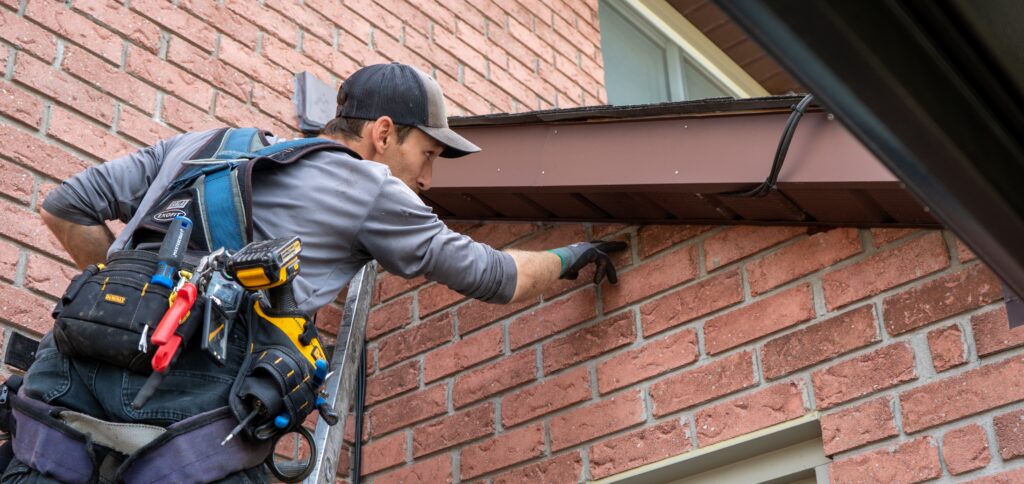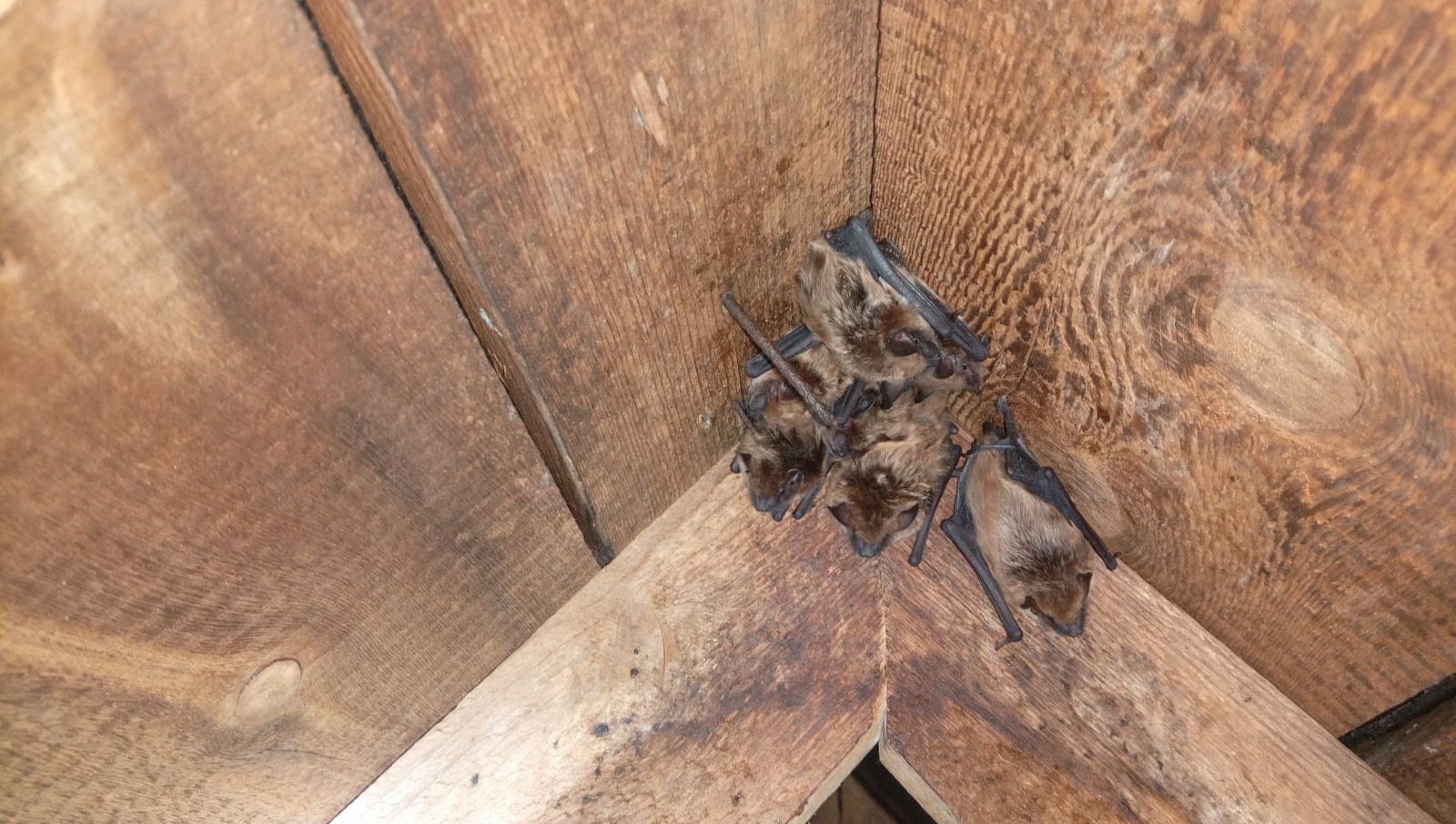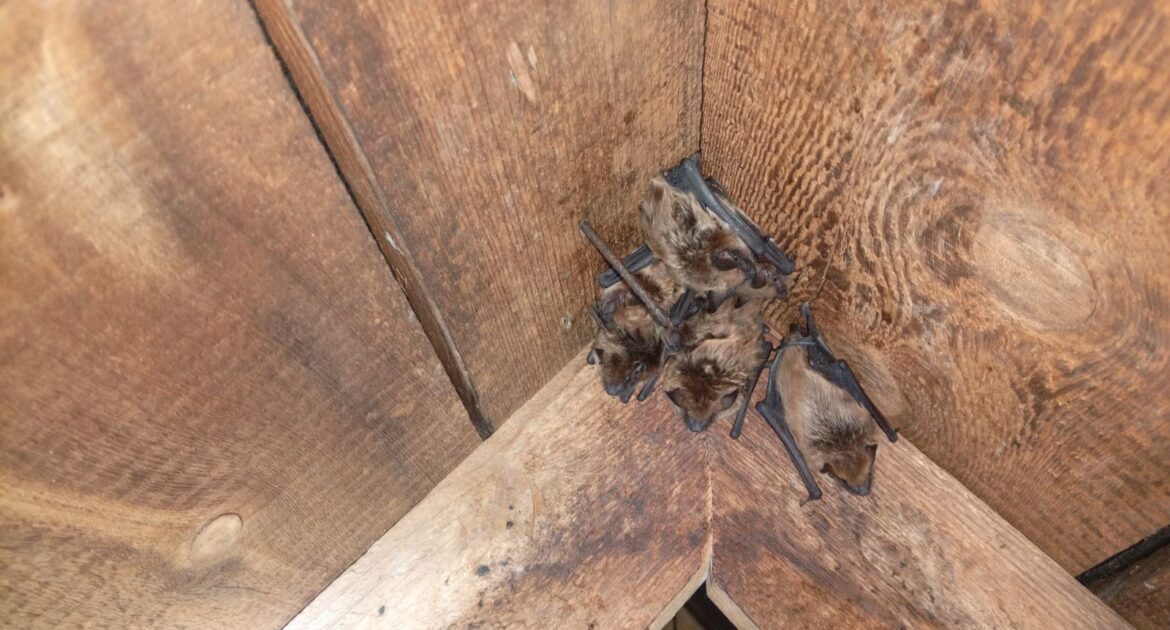As dusk settles over urban landscapes, an unnoticed drama unfolds high above within the city’s roofs. While many of us enjoy the last moments of daylight, bats are just beginning their nightly quest for food and shelter. These remarkably adaptable creatures have found urban environments to be surprisingly hospitable habitats, often seeking refuge in the comfort of our homes. Their entry point of choice? The very top of our abodes—the roof. This creates a perfect storm of curiosity and concern for homeowners throughout Marietta and beyond.
So, how do bats manage to infiltrate your once-secure space? The secret lies in their ability to slip through minuscule gaps and openings as small as half an inch. Rooflines, soffits, and vents often contain these hidden vulnerabilities. Once inside, bats can establish a colony, posing potential health risks due to droppings and the possible spread of diseases. If you’re wondering what to do if you have bats in your roof, addressing the issue promptly is key. Our team at Skedaddle Humane Wildlife Control in Marietta is well-versed in handling these nocturnal visitors, offering professional bat infestation removal services.
As we navigate the nuances of keeping urban wildlife at bay, we’ll explore why roofs also invite rats, the effects of bats harmful to humans, and the best practices in humane wildlife removal. Throughout this journey, our experts will provide reliable insights on maintaining your home as a sanctuary—unhindered by the city’s untamed tenants.
Gaps in Roof Vents
Roof vents are essential components of home ventilation systems, designed to facilitate airflow and regulate temperature. However, despite their critical role, these vents can inadvertently serve as gateways for bats seeking shelter.
Bats are incredibly agile and possess a unique skeletal structure that allows them to compress their bodies and squeeze through openings as small as half an inch. This ability means that even slight gaps around roof vents can provide ample entry points for these nocturnal creatures. The soft material or flexible mesh used in some vent designs may not be robust enough to deter determined bats.
Once they identify a potential entrance, bats will exploit these minor vulnerabilities, gaining access to attics or rafters where they can roost and establish colonies. Understanding these entry dynamics is crucial for homeowners looking to secure their properties and prevent unwelcome wildlife invasions. Ensuring that roof vents are properly sealed and maintained can be an effective measure against bat intrusions.
Cracked or Missing Shingles
Shingles are your roof’s first line of defense against weather elements. However, they can become damaged over time due to storms, high winds, or simply wear and tear. Cracks or missing shingles not only compromise your roof’s integrity but also provide easy access for bats seeking refuge.
Bats are nocturnal creatures that look for quiet, dark places to roost during the day, and a damaged roof can offer the perfect hideout. Unfortunately, these vulnerabilities often go unnoticed until a full-fledged infestation has already taken root.
Regular roof inspections can help spot these issues early, preventing bats from establishing residence in your home. Addressing shingle damage promptly can save you from the hassle of evicting these winged tenants later on.
Chimney Openings
Chimneys often serve as enticing entry points for bats looking for sheltered spaces within a structure. These architectural features, designed to funnel smoke from fireplaces, unintentionally provide a direct path into the attic or roofing spaces of a home.
Particularly during times of disuse, chimneys can be warm, dark, and quiet—ideal conditions alluring to bats seeking a safe roosting spot. Without the implementation of proper caps or screens, chimneys essentially become open invitations for these creatures.
The lack of robust barriers allows bats to easily navigate their way inside, creating potential for them to settle in and establish colonies. To safeguard against such intrusions, it’s essential to ensure that chimneys are equipped with securely fitted caps or screens, allowing homeowners to enjoy the warmth of their fireplaces without welcoming these nocturnal visitors.
Unsealed Attic Spaces
Poorly sealed attic spaces, particularly around fascia boards or soffits, present vulnerable access points that bats can easily exploit. These structural elements, often overlooked by homeowners, can develop small gaps due to weathering, pests, or shifting building materials over time. Such openings become inviting doorways for bats looking to find a comfortable roosting location within the higher parts of a home.
To effectively protect against these intrusions, it is crucial for homeowners to conduct thorough inspections of attic spaces, meticulously checking for potential entry points. Detecting and sealing these gaps promptly not only prevents bats from making your attic their new home but also enhances the overall integrity and energy efficiency of your property.
Gaps Around Eaves and Dormers
Bats can easily exploit small gaps between the roof and walls near eaves and dormers as entry points into homes. These areas are particularly vulnerable due to their inconspicuous nature and the challenges associated with accessing and inspecting them.
Eaves and dormers tend to have complex architectural designs, where junctions and intersections of materials might not fit perfectly. This can result in narrow fissures or spaces that are just large enough for bats to navigate through. Homeowners often overlook these spaces during regular maintenance checks because they are not as visibly apparent or easy to reach as more prominent parts of the roof.
Consequently, any existing gaps can go unnoticed and unaddressed, providing an ideal opportunity for bats to enter attics or upper home sections. To mitigate this risk, it is essential for homeowners to include these areas in comprehensive inspections and promptly address any detected gaps to maintain a secure and bat-free environment.

Professional Intervention: A Necessary Step
Effective sealing and prevention of future bat infestations require more than just DIY solutions. Professional intervention is essential to properly identify and seal all possible entry points, which might be overlooked by homeowners. We specialize in humane bat removal and employ innovative strategies such as one-way doors. These allow bats to exit your home safely while preventing reentry, ensuring a humane approach to wildlife control.
By contacting our team, you can schedule comprehensive inspections and receive permanent solutions that protect your home from further bat intrusions. We understand the concerns related to bats, including potential health risks and the nuisance they can pose. Therefore, we offer professional bat infestation removal services that are effectively designed to address these issues.
Maintaining a bat-free environment is crucial for both the structural integrity of your home and your family’s health, given that bats can be harmful to humans. If you’re dealing with bats in your roof and wondering what to do, professional bat infestation removal is the safest and most effective course of action.
Our team at Skedaddle Humane Wildlife Control in Marietta is ready to assist with expert solutions tailored to fit your needs. Contact us to request a quote and learn more about how we can help secure your home against uninvited wildlife guests.




